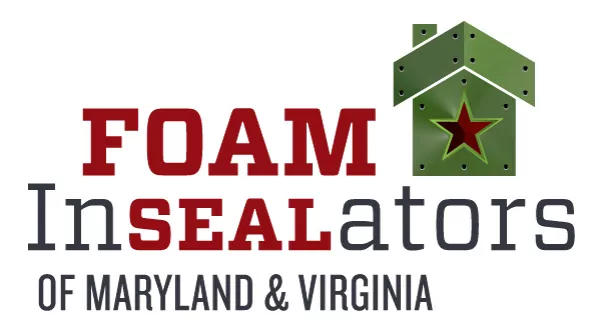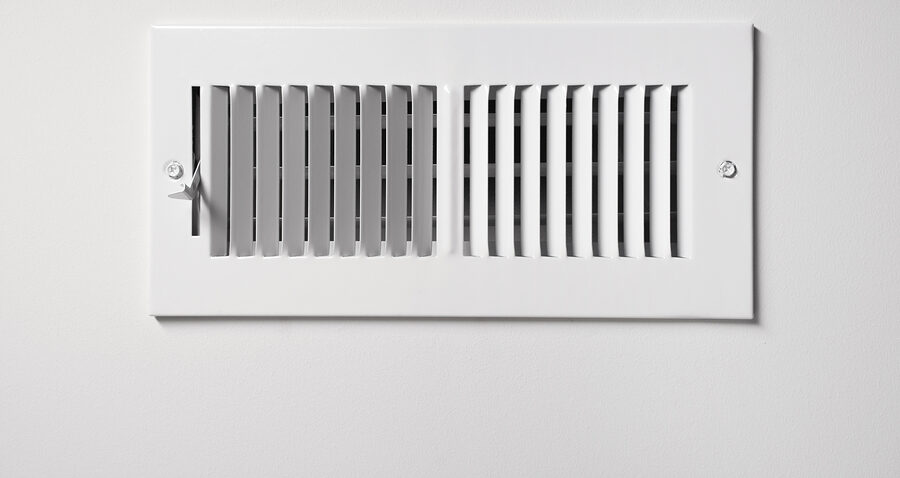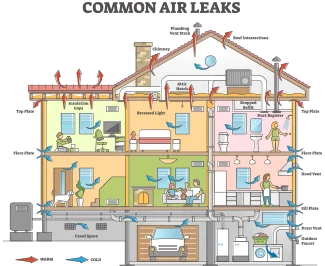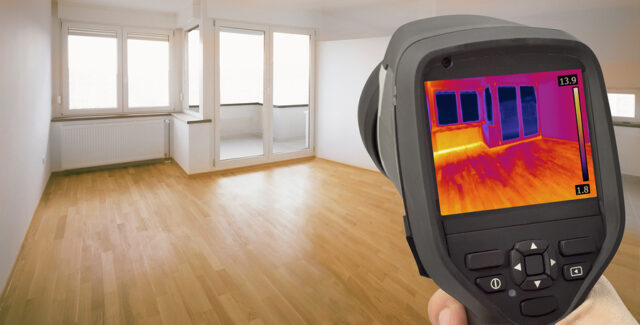Updated September 2025
Do you remember visiting an older relative’s home as a kid? The hug was warm, but the air was stale. Poor airflow, mothball smells, and stuffy rooms were just part of the experience. Back then, no one thought much about how air flow affected comfort or their energy bill.
But times have changed. Improving airflow in your home can save you money, boost comfort, and lead to healthier indoor air. If you’re a Maryland or Virginia homeowner, this guide will help you better understand airflow in your home and what you can do to control it.
Understanding Home Airflow
There are two types of air flow in homes: uncontrolled airflow and controlled airflow.
Uncontrolled airflow, also called air infiltration, happens when outside air leaks in through cracks around your windows, doors, and other areas. It often brings in humidity, radon, mold spores, pollen, and dust. These are all things you don’t want floating around your living room. This can put extra strain on your heating and cooling system, create temperature swings, and even lead to mold or health issues.
Controlled airflow is intentional ventilation. It can be managed through your HVAC system, fans, ventilators, and other mechanical devices. Homes require mechanical ventilation to be energy efficient and maintain air quality and comfort.
Assessing Your Home’s Airflow
The best way to assess your home’s airflow is by having a professional home energy audit done. An important part of a thorough energy audit is a blower door test that pressurizes your home to reveal air leaks you’d never spot on your own.
For a DIY check, try:
- The incense stick test: On a breezy day, move it near your windows, doors, and outlets. If the smoke wavers or gets pulled, you’ve got a leak.
- Infrared thermal imaging: This shows temperature differences in your walls and ceilings. Fairfax County, VA residents can even borrow a thermal camera from the local library!
Tips to Improve Airflow
Service your HVAC system regularly.
Have an HVAC technician regularly inspect and clean your home’s fans, blowers, and dampers. This improves performance and helps your system last longer.
Use fans strategically.
Ceiling fans can help circulate air moving up or down based on the season. Exhaust fans in your kitchen and bathrooms pull out moisture and stale air. On nice days, use window fans and whole house fans for fresh air exchange.
Keep vents and air filters clean.
Make sure furniture or dust isn’t blocking your supply or return vents. Vacuum and dust your vent grilles often. Replace your air filters regularly to keep clean air moving through your system.
Bring in fresh air safely.
Open your windows/doors or run exhaust fans when outdoor air quality is good. This is an effective way to exchange indoor and outdoor air. Avoid this during extreme weather or high pollution days.
Consider mechanical ventilation.
If your home is tightly sealed or has limited natural ventilation, think about adding systems like supply/exhaust fans or a balanced ventilation system with dedicated fans and ducts.
Monitor indoor humidity.
Use dehumidifiers and exhaust fans to keep relative humidity between 30–50%. This helps prevent mold and keeps your home comfortable.
Sealing and Insulation
Small leaks add up. Sealing those air leaks can reduce your energy use by up to 20%. Common leak points include:
- Around windows and door frames
- Attic hatches and recessed lighting
- Pipes, wires, and outlets
- Small openings throughout your building envelope
You can DIY small leaks with caulk, weatherstripping, or foam sealant. For a long-term fix and a more comprehensive solution, professionally installed spray foam insulation is the way to go. Spray foam expands to fill gaps, sealing and insulating at the same time. No other insulation material does the same.
Advanced Solutions
Energy Recovery Ventilators (ERVs) and Heat Recovery Ventilators (HRVs)
These systems take airflow control to the next level. They exchange stale indoor air for fresh outdoor air while retaining heating or cooling energy. You will save money year-round by recycling energy. ERVs and HRVs are especially valuable for airtight homes and quality-focused homeowners.
Smart Thermostats
ENERGY STAR® certified models save homeowners around 8% on heating and cooling costs, or about $50 a year. Smart thermostats learn your preferences, adjust automatically, and can even work with your ventilation system for even better results.
Cost-Benefit Analysis
Some of these upgrades come with a price tag, but the long-term savings are worth it. From sealing leaks, to smart thermostats and HVAC maintenance, each improvement adds value.
You can look to homes that have been built with the Passive House standard to see these solutions in effect. Passive homes, which use airtight construction, heavy insulation, and mechanical ventilation, have been found to use 90% less heating energy than older homes and 75% less than modern new builds.
Don’t forget the hidden benefits of a home with managed airflow:
- Cleaner indoor air with less dust and allergens
- A quieter home environment
- No more drafts and temperature inconsistencies
- A higher resale value
- Peace of mind
Create a More Comfortable Home
Take proactive control of your home’s airflow with a holistic approach. Small tweaks (like using fans or replacing air filters), medium upgrades (like spray foam insulation), and advanced systems (like ERVs and smart thermostats) all contribute to better airflow in your home.
At Foam InSEALators, we’ve been helping homeowners in Maryland and Virginia since 1994. From duct cleaning to spray foam insulation to professional energy audits, our team can help you breathe easier and save more.
Contact us today for a free estimate and take the first step toward a more comfortable, energy-efficient home.
References
ENERGY STAR. “ENERGY STAR Smart Thermostats FAQs.” energystar.gov, U.S. Environmental Protection Agency, n.d. Accessed 14 Sept. 2025. energystar.gov.
ENERGY STAR. “Smart Thermostats.” energystar.gov, U.S. Environmental Protection Agency, n.d. Accessed 16 Sept. 2025. https://www.energystar.gov/products/smart_thermostats.
Grisso, Robert, et al. “ENERGY SERIES: What about Ventilation?” Virginia Cooperative Extension, Virginia Tech, Publication 2908-9024, n.d. Accessed 14 Sept. 2025. pubs.ext.vt.edu.
Home Depot. “Ceiling Fan Direction in Summer and Winter.” HomeDepot.com, 30 April 2025. Accessed 16 Sept. 2025. https://www.homedepot.com/c/ah/ceiling-fan-direction-in-summer-and-winter/9ba683603be9fa5395fab9036ab25bf.
McCord, Mark. “What exactly is a passive house – and could it be the future of sustainable housing?” World Economic Forum, 26 Jan. 2021. Accessed 14 Sept. 2025. https://www.weforum.org/stories/2021/01/passive-housing-sustainable-emissions-reduction/#:~:text=rigorous%20tests%20set%20by%20the,Passive%20House%20Institute%20in%20Germany.
Montgomery County Dept. of Environmental Protection. “Suggestions for Improving Your Indoor Air.” Montgomery County, MD (Indoor Air Quality web page), n.d. Accessed 14 Sept. 2025. montgomerycountymd.gov.
Office of Environmental and Energy Coordination. “Seal Air Leaks At Home As The Weather Turns Colder.” Fairfax County, VA, 23 Sept. 2022. Accessed 14 Sept. 2025. fairfaxcounty.gov.
Roberts, S., and R. Stephenson. Wall Air Sealing and Insulation Methods in Existing Homes: An Overview of Opportunity and Process (Measure Guideline). National Renewable Energy Laboratory, Sept. 2012. Accessed 14 Sept. 2025. nrel.gov.
U.S. Department of Energy. “Blower Door Tests.” Energy Saver, energy.gov, n.d. Accessed 16 Sept. 2025. https://www.energy.gov/energysaver/blower-door-tests.
U.S. Department of Energy. “Detecting Air Leaks.” Energy Saver, energy.gov, n.d. Accessed 14 Sept. 2025. energy.gov.
U.S. Department of Energy. “Whole-House Ventilation.” Energy Saver, energy.gov, n.d. Accessed 14 Sept. 2025. energy.gov.
U.S. Environmental Protection Agency. “Care for Your Air: A Guide to Indoor Air Quality.” EPA.gov, n.d. Accessed 16 Sept. 2025. https://www.epa.gov/indoor-air-quality-iaq/care-your-air-guide-indoor-air-quality#:~:text=Keep%20indoor%20humidity,on%20the%20humidifier.




